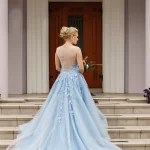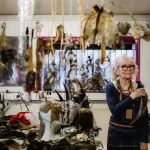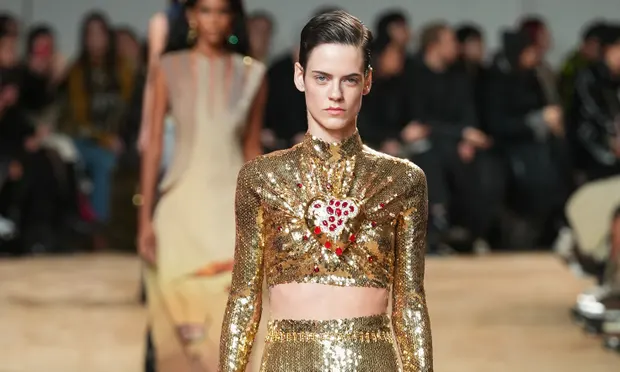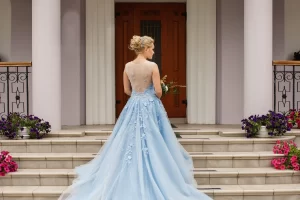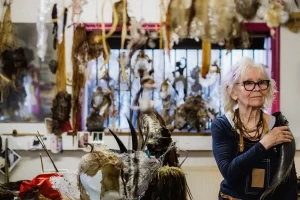In silver chainmail hoods and Perspex dresses, aluminium-foil suiting and gleaming white space boots, the faithful came to pay their respects. At the first Paco Rabanne catwalk show since the founder’s death last month at the age of 88, the loyal clients and fans who packed the front row alongside the eminent designers Jean Paul Gaultier and Nicolas Ghesquière mirrored a newly minted catwalk collection which was packed with dazzling silver and rustling tinsel in tribute to the futuristic fashion that made Rabanne famous.
Fake fur skirts and trousers made from shards of crystal rustled and shimmied in homage to Rabanne’s delight in fashioning clothes from unlikely materials. The delicate chainmail evening bags that have been a signature and house bestseller for decades made several appearances.
After Rabanne retired from fashion in 1999, the house he founded was revived by the Spanish luxury group Puig in 2011 initially under the designer Manish Arora. Since 2013 the house has been helmed by Julien Dossena, who has brought vitality back to the name by reviving the shiny, hard-edged cocktail looks for modern party wardrobes.
Dossena left on each seat at the show a signed note thanking “Monsieur Rabanne” for his “utopic creative approach” and “radical expression”. As a postscript to the collection he created for the occasion Dossena ended the show with a finale of five original Paco Rabanne dresses.
Alongside Pierre Cardin andAndré Courrèges, Rabanne brought a Space Age vision to fashion in the 1960s. His innovations included chainmail dresses made from studded aluminium, paper wedding gowns, a coat composed of metal triangles; a dress built from elastic bands and another made from 9kg of gold, which was worn by the French singer Françoise Hardy in 1968.
The late Spanish designer’s first catwalk show, entitled 12 Unwearable Dresses, scandalised Paris when it was staged in 1966. The “dresses” – strips of plastic loosely bound together with metal rings – used neither traditional dressmaking fabrics nor techniques. The horrified reaction of the fashion press was stoked by Rabanne, who in 1967 told reporters: “Haute couture is nothing but a decomposing cadaver surrounded by vultures: publishers, journalists, columnists and advertising people … They cannot bring themselves to face the fact that fashion is dead, which is why they spend their time trying so hard to make the corpse look alive and well.”
Bruno Pavlovsky, president of the Fédération de la Haute Couture et de la Mode, paid tribute to Rabanne’s place in French fashion history, saying that “Paco Rabanne was a major fashion designer who never stopped exploring traditional knowhow and new techniques with audacity and eccentricity. A couturier who broke new ground in fashion since his first show in Paris.”
Source: The Guardian


